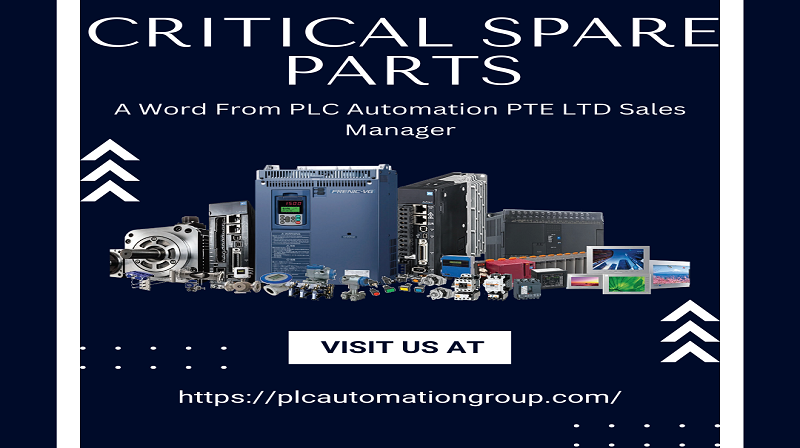
Crtical Spare Parts : A word from PLC Automation Sales Manager
- by PLC
- Mar 29, 2023
In the automation industry, critical spare parts are components or parts that are essential to the functioning of automation equipment. These are the parts that, if they fail, can cause costly downtime or production delays. Critical spare parts can vary depending on the specific equipment and industry, but here are some examples of critical spare parts in the automation industry:
1. Motors and Drives: Motors and drives are essential to the operation of many types of automation equipment, including conveyors, pumps, and compressors.
2. Control Systems: Control systems are used to regulate the operation of automation equipment, and failures can lead to downtime or unsafe conditions.
3. Sensors: Sensors are used to monitor and measure various aspects of automation equipment, such as temperature, pressure, and position. Failures can lead to inaccurate readings or equipment malfunctions.
4. Actuators: Actuators are used to control the movement of automation equipment, such as valves, cylinders, and grippers.
5. Power Supplies: Power supplies provide the necessary voltage and current to operate automation equipment. Failures can lead to equipment malfunctions or even damage.
6. Circuit Boards: Circuit boards are used in many types of automation equipment, and failures can lead to equipment malfunctions or downtime.
7. Pneumatic Components: Pneumatic components, such as cylinders and valves, are commonly used in automation equipment and failures can lead to equipment malfunctions or production delays.
When it comes to maintaining critical spare parts, there are several important steps that you can take to ensure that your equipment runs smoothly and efficiently. In this blog post, we'll discuss some best practices for maintaining critical spare parts and avoiding costly downtime.
1. Identify Critical Spare Parts: The first step in maintaining critical spare parts is to identify which parts are critical to your operation. This includes components that are essential to the functioning of your equipment, as well as those that have long lead times or are difficult to replace.
2. Create an Inventory: Once you have identified your critical spare parts, create an inventory of all of the parts you have on hand. This will help you keep track of what you have in stock and ensure that you have enough spare parts on hand to minimize downtime in the event of a breakdown.
3. Establish Maintenance Procedures: Establishing maintenance procedures is crucial to keeping your critical spare parts in good condition. Regular inspections, cleaning, and lubrication can help prevent premature wear and ensure that your parts are ready to be used when needed.
4. Store Spare Parts Properly: Proper storage is also critical to maintaining spare parts. Parts should be stored in a clean, dry, and temperature-controlled environment to prevent damage from moisture, dust, or extreme temperatures.
5. Monitor Inventory Levels: Regularly monitor your inventory levels to ensure that you have enough spare parts on hand. This will help you avoid costly downtime in the event of a breakdown and allow you to order parts in advance to reduce lead times.
6. Consider Using a CMMS Using a computerized maintenance management system (CMMS) can also help you manage your critical spare parts more efficiently. A CMMS can help you track inventory levels, schedule maintenance, and generate reports on spare part usage.
In conclusion, maintaining critical spare parts is essential to ensuring the smooth operation of your equipment and avoiding costly downtime. By identifying critical parts, creating an inventory, establishing maintenance procedures, storing parts properly, monitoring inventory levels, and using a CMMS, you can keep your spare parts in top condition and minimize the risk of unexpected breakdowns. Hence keeping in view the value of downtime we at PLC Automation PTE LTD work towards minimising the downtime from 24 hours to 14 days with 12 months warranty.
Overall, identifying and maintaining critical spare parts is crucial to minimizing downtime and ensuring the smooth operation of automation equipment.













